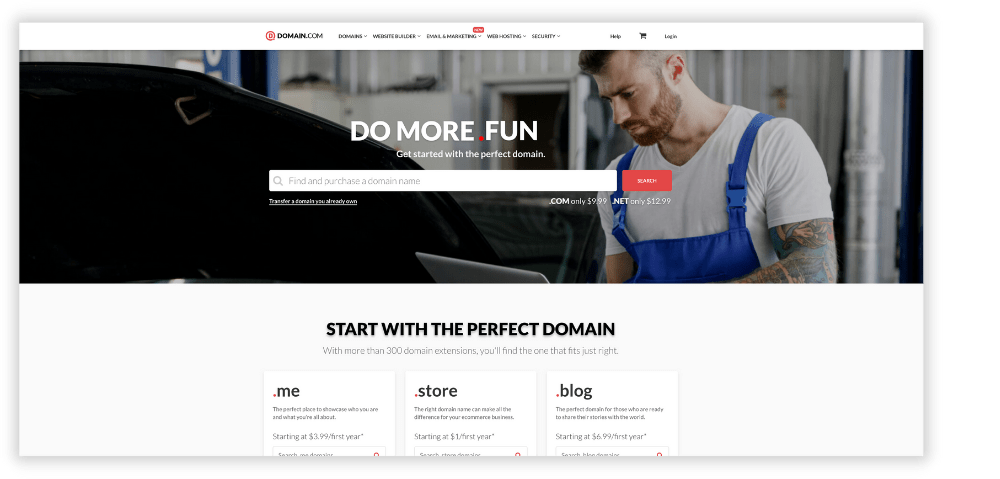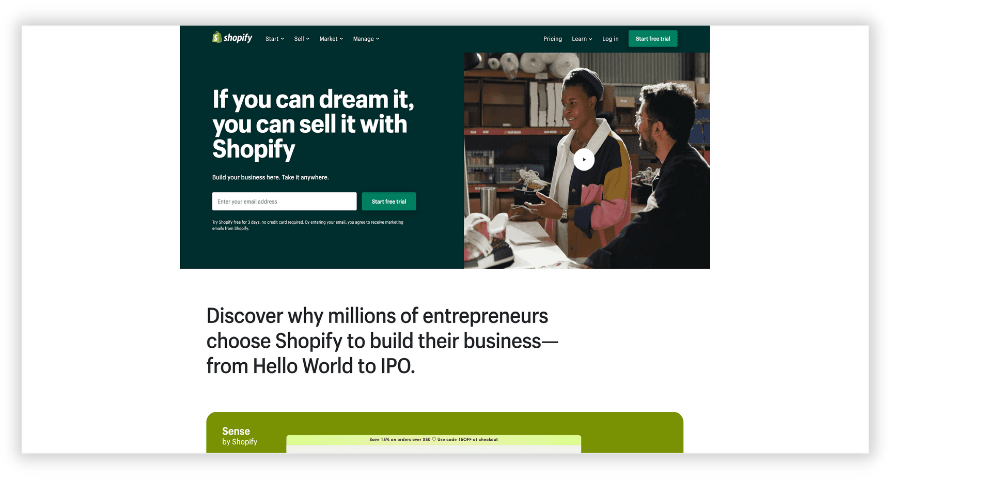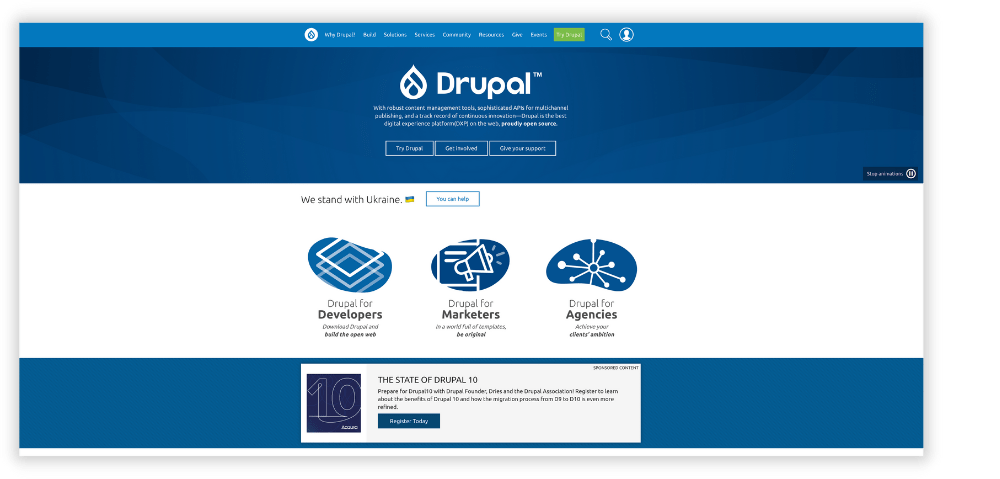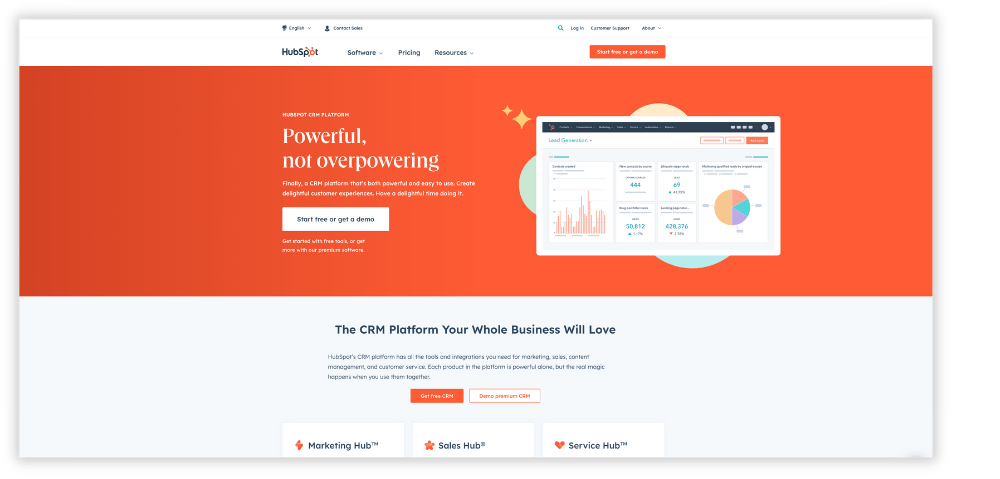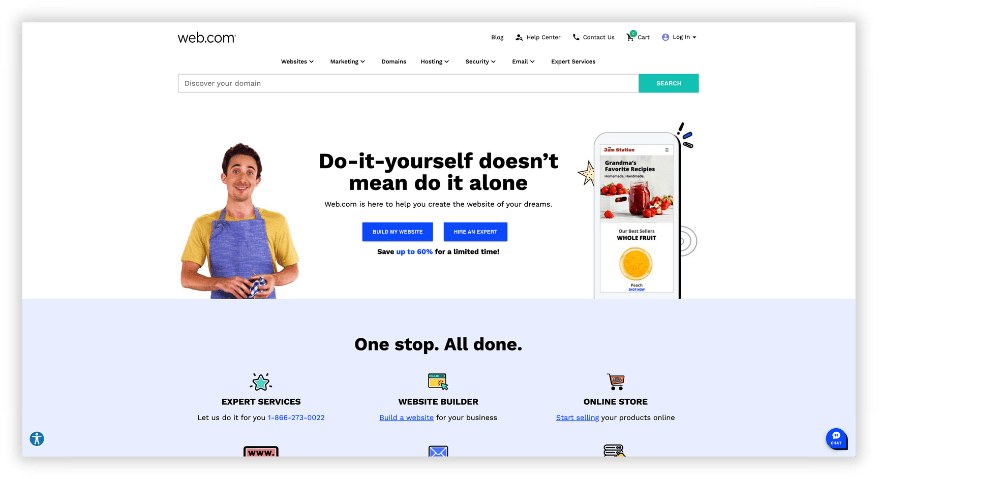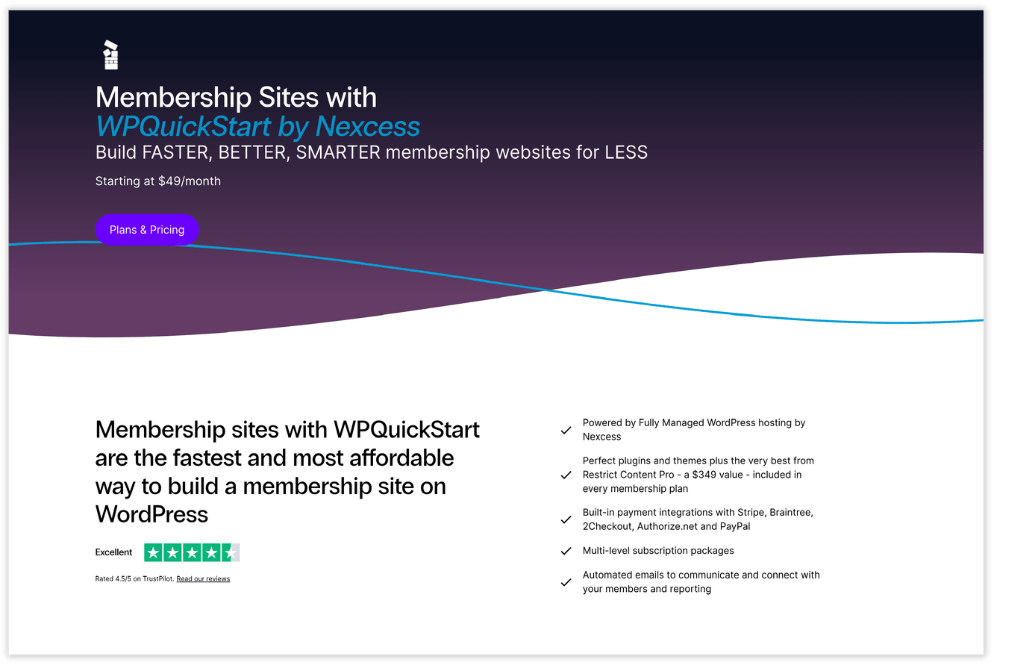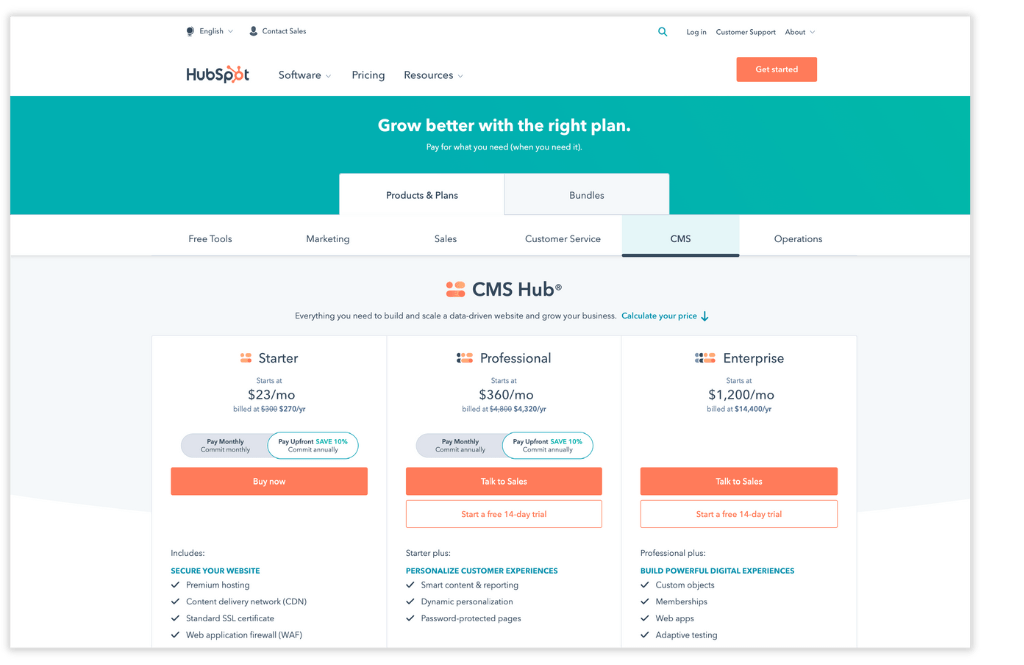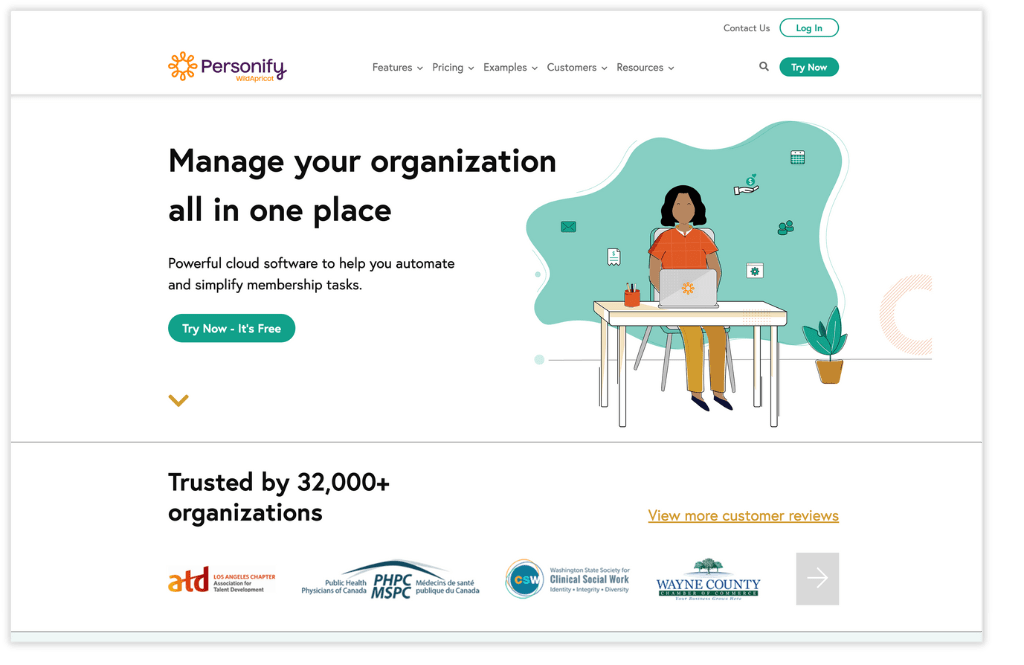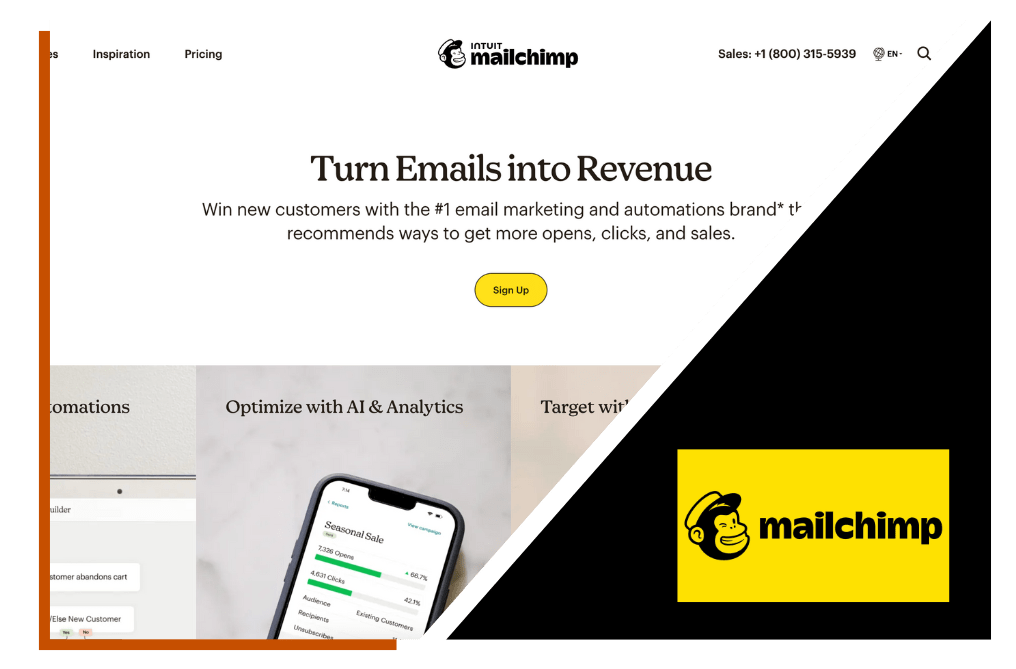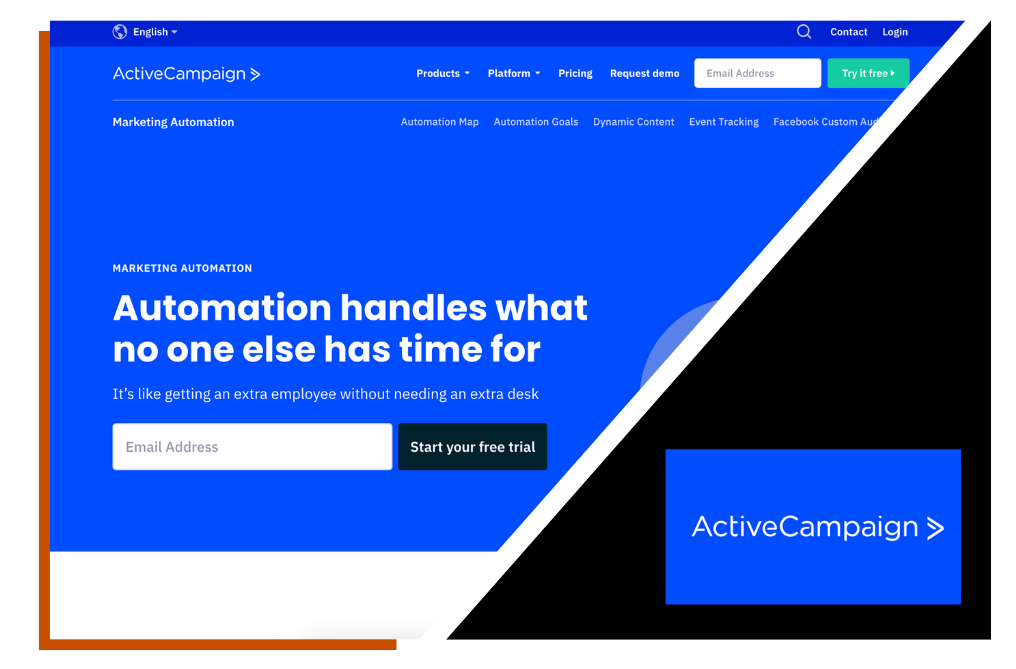What is Digital Engagement?
9 Best WordPress Alternatives for Building a Website
- Community
- Content Strategy
- Innovation
- and 4 more...

When it launched in 2003, Wordpress sparked something close to a digital revolution. Suddenly, almost anyone could make a professional-grade website packed full of high-quality content, and it now dominates the market.
Believe it or not, about 43 percent of all websites currently run on Wordpress1, making it the most popular website builder in the world. But it’s not the only option. And if you’re about to take the plunge, you should ask yourself:
What kind of WordPress alternatives are out there?
It’s true that Wordpress is a powerful tool, with things like drag-and-drop block editing, thousands of themes and countless plug-ins to choose from, but it can also get complex pretty quickly. Perhaps the plug-ins you’ve chosen are not compatible with each other… that happens. Or maybe you’re not up for the hassle of managing your own web hosting, with security and updates and all the rest.
Luckily, many WordPress alternatives exist. Some offer a simple approach, while others are extra flexible. Some emphasis e-commerce, while others are great for blogging. You just need to know what's right for you.
We’ve scoured the internet to compile a list of the 9 best WordPress alternatives for building a website, with hopes of giving you a fuller picture of the options.
1. Wix
Wix is probably the best-known Wordpress alternative, and there’s good reason for that. If you’re looking to keep things simple, Wix is great for building basic websites with a similar drag-and-drop model to Wordpress, but a more streamlined list of plug-in options to choose from.
2. Domain.com
Next up we have Domain.com, which excels in a few areas where Wordpress does not – right out of the box. While WordPress needs some customization before you can start selling goods and services, Domain.com comes ready-to-go with e-commerce capability. Good news if you need to set up shop.
3. Shopify
Then we have Shopify, and just by the name you can tell – it’s built for e-commerce. Shopify is one of the best Wordpress alternatives if you need a digital storefront, and with great-looking templates, payment option tools and 24/7 tech support, you get a professional feel without much heavy lifting.
4. Drupal
As far as rivals to Wordpress, Drupal is most popular with bigger organizations. If you’re looking to create a website with complex, one of a kind content at enterprise scale, Drupal is almost endlessly customizable, and highly adaptive. The drawback is you’ll need some technical know-how to set it up.
5. Squarespace
Squarespace is a great Wordpress alternative with a little something for everyone. Whether you’re building your first site for a new small business, or you’re a creative looking to showcase your work, it has a familiar drag-and-drop feel, and templates that often look better than the competition.
6. Hubspot
Searching for a high-tech solution? Hubspot’s CMS Hub is a powerful content management system – and its main draw is a fully-hosted platform, meaning it can handle all that pesky back-end maintenance on its own. Plus, with automated marketing tools and killer analytics, you get a lot of bang for your buck.
7. Ghost
Not all websites are intended to sell stuff – some are just there to deliver fantastic content – and if you are a writer of any kind, Ghost might be the way to go. With powerful SEO and publishing tools built right in, plus things like an RSS feed builder and full-picture editor, this is a great choice for creatives.
8. Web.com
Web.com is a good choice for Wordpress alternatives that don’t break the bank – or take over your life. Relatively inexpensive and easy, users can start by choosing from a list of templates. Or, with the added ability to make your own design, this option can also help you create a truly unique brand experience.
9. Medium
Another example in the world of Wordpress alternatives is Medium. Perfect for publishing text, you’ve probably read a column written by a celebrity on Medium in the past – even if you didn’t know it. It’s not as endlessly customizable as some of the others. But it’s clean looking if the written word is your thing.
In the end, this is still just a fraction of the website-building options out there, and it might sound like a lot to think about. Whether you just need a website or if you're looking to give your community a home, it’s a decision you can’t afford to sleepwalk into. Take the time to decide what works for you.
Get Started With Cause Machine
Starting with a community engagement strategy is the secret to building a successful platform in the long term. Cause Machine helps customers build the plan of engaging a community well and then begin mapping out the technology to help support that strategy. We’re certain that you’ll find some great resources and powerful tools in Cause Machine to better engage your community. Learn how it can work for you here.
3 Membership Site Tools to Inspire Your Approach
- Community
- Content Strategy
- Innovation
- and 3 more...

So you’ve built a thriving community around a bold cause or brilliant product. Great work! But you’re not done yet.
As your project scales up, one of the most powerful tools you can implement is a membership site, turning “users” into members, driving engagement to your cause… and even monetizing your work.
With the creator economy growing, all sorts of businesses use membership sites – which is really just website that features some sort of “gate,” beyond which only members can pass.
Artists and influencers, nonprofit organizations, social clubs, associations, even retail businesses use these since they all need to present content that only members have access to. That could be special sales and exclusive products, digital classes, or even just a newsletter, and these memberships don’t even have to be paid – they could just involve opting in. But the point is this: Being a member comes with special privileges… and added consumer value.
From your perspective, this added value is the key. It can lead to more revenue for your business, repeat visitors to your site, longer session times, and greater sales numbers – and plus, you could even add a revenue stream if the memberships are paid. But like anything, there are different methods to building a great membership site for your community, and different strengths to each approach.
3 popular membership site approaches:
1. WPQuickStart
WPQuickStart for Membership Sites is a plug-in service designed especially for WordPress – the website builder used by almost half of all websites worldwide. If you already have a website, and it’s running on WordPress, this offers a way to add membership functionality.
Key Features
- Fast and easy set-up
- Multi-level subscription packages
- Built-in tools for payment, marketing, and analytics
- WordPress Security
2. CMS Hub from Hubspot
On the other hand, creating a membership site using CMS Hub from Hubspot can help you create a customized experience. More than a plug-in that works with your WordPress website, this standalone content management system is fully hosted by Hubspot (and fully integrated with its marketing, sales, and service tools). The possibilities are endless. You can create multiple membership tiers, with unique perks included in each. But the downside is higher cost – and the fact that one-of-a-kind creations take time and expertise.
Key Features
- Hubspot hosting and systems integration
- Full design flexibility
- No plug-ins necessary
- Personalize membership experience
3. WildApricot
Creating a connected membership site usually comes down to whether or not the platform can truly meet your needs. Another solution that has membership capability is WildApricot. WildApricot has a variety of ways to build and run your community. One is a built-in member database that allows you to manage how members interact with one another, share exclusive member-only content and more. You can create multiple tiers of membership and encourage users to join up with membership applications. WildApricot is a solid option for launching a membership site.
Key Features
- Member database
- Event management
- Mobile app
- Online store
Transitioning from casual users into highly-engaged members is crucial to growth and monetization, and so is using the right platform to do it. Ideally, you’d keep everything from website building to e-learning and membership controls in one place (with a little marketing prowess and analytics thrown in), so you don’t have to piece your digital footprint together.
Get Started With Cause Machine
Starting with a community engagement strategy is the secret to building a successful platform in the long term. Cause Machine helps customers build the plan of engaging a community well and then begin mapping out the technology to help support that strategy. We’re certain that you’ll find some great resources and powerful tools in Cause Machine to better engage your community. Learn how it can work for you here.
Master Alumni Engagement Best Practices
- Community
- Content Strategy
- Guiding People
- and 4 more...

For any university, college, or school system, alumni networks are important. A network of alums doesn’t just help meet fundraising goals, but members can even act as public ambassadors, mentor students and offer post-graduation job opportunities, support athletic departments, and even help increase new student enrollment.
But the key to all that is good alumni engagement, and not everyone does it well. Today we’ll explore some alumni engagement best practices to make your network as strong as it can be.
How Important is Alumni Engagement?
According to a 2020 report by the Council for Advancement and Support of Education, alumni giving at U.S. colleges totaled more than $11 billion in 2019. That’s a lot of money, but it’s not spread out evenly.
Only 8 percent of U.S. alumni give to their alma mater on average, according to that same survey of 1,451 ranked colleges. Meanwhile, the top schools in the study were seeing giving rates of 44 percent and higher. Once again, the difference is a strategic approach to alumni engagement.
Donor Search notes that a full 93 percent of alumni associations “offer no direct benefits to their members.” Let’s make sure you don’t fall into that category.
6 Alumni Engagement Best Practices
1. Know Your Audience
As with any community nurturing operation, the first step is to know who you are talking to. Your alumni network is mostly likely diverse, so create a few categories and different messaging for each category of alums. Make sure to keep your member database (CRM) up to date, too – there’s no point in reaching out to people who have dropped off the rolls.
- Update your database constantly.
- Make sure you have a system for getting 'new' alums involved.
- Segment your target members into categories.
2. Tailor Content to Your Alums
Now that you have some categories set up, it’s important to create messaging that speaks to each one directly. If you’re talking to fans of the school’s sports programs, keep that in mind. Graduates from an Education program? People with a Finance degree? Take a different approach with each different group of people. Not everyone will want to engage with the school. But lifelong fans are ready to jump in and support/engage how they can.
- Find out what content (videos, news, articles, podcasts, etc.) your alums will find valuable (test if you're not sure).
- Create a distinct customer journey alumni will work through, then insert relative 'asks' along the way.
3. Don’t Just Ask for Money
Fundraising is a big part of why the network exists, but when it comes to alumni engagement best practices, you can’t just solicit donations and nothing else. Members will start to delete or ignore the content reflexively. Instead, send them news on new programs and sports updates, offer perks from local partner businesses, and anything that will make them feel like they're still part of the community. Free guides, offers, and perks are always good choices.
- Add in non-fundraising communication.
- Include local news, program updates, and sports results are all good ideas.
- Offer alumni discounts from partner businesses.
4. Mix Things Up
People get bored easily, and if you’re only reaching out via one mode of communication, it will get old fast. Plan out a healthy mix of email campaigns, articles, video content, podcasts, snail mail, and even texting. Also, use video and social media to reconnect with old alums – especially alumni-generated content, which sees a high rate of engagement. Alumni photos from the big game? Student snaps of their favorite part of campus? That’s all great.
- Utilize different modes of communication.
- Vary between email, newsletters, alternate platforms, etc.
- Highlight user-generated content whenever possible.
5. Keep It Steady
High on the list of alumni engagement best practices is regular communication. Plan out ways to be consistent in reaching out, even as you mix up the mode of contact and message. It shows you are engaged and that effort will be appreciated. It will also keep your school fresh in the alumni’s memory.
- Set up an editorial calendar to track content production and publishing.
- Look to start monthly email nurture campaigns, quarterly newsletters, regular events, and reunions.
6. Deliver a Sense of Ownership
Finally, the most engaging alumni networks have one thing in common: They make their members feel a sense of ownership in the institution. They probably already feel a sense of pride in the school, so you just have to take that one step further. Creativity is welcome here, but it could be done with something as simple as a survey. Take the results, listen to the members, and keep them in mind when making changes, planning events, or expanding. Then report back through your network.
- Remind alums that they (and their honest opinion) are valued.
- Create surveys and act on feedback.
- Build your site on a reliable membership platform that offers features to help engage alums.
To Succeed, You Need a Strategic Plan to Manage Alumni
As we’ve seen, engagement is the most important factor in a high-functioning alumni network, and the returns on your hard work can be game-changing. These alumni engagement best practices aren’t complicated, and most of them aren’t even hard to do, but they will help you give the most to your members and get the most for your institution.
Get Started With Cause Machine
Starting with a community engagement strategy is the secret to building a successful platform in the long term. Cause Machine helps customers build the plan of engaging a community well and then begin mapping out the technology to help support that strategy. We’re certain that you’ll find some great resources and powerful tools in Cause Machine to better engage your community. Learn how it can work for you here.
4 Best Email Marketing Tools
- Content Strategy
- Marketing
- Technology
- and 1 more...

"Email marketing" sounds a bit old school considering it has been in widespread use for nearly 40 years. But when it comes to reaching customers, email marketing is still one of the most effective tools aspiring companies utilize.
Considering its importance, choosing an email marketing tool that serves your business needs is crucial.
First, a little context for any doubters.
According to recent research, email marketing has an ROI of $36 for every $1 spent – much higher than any other form of marketing. As of 2020, over 4 billion people use email worldwide, and by the end of 2024, 361 billion emails will be sent each and every day. That means consumers are comfortable with this form of communication, and many report being glad to hear from a business they like.
Actually, it’s more than that.
A full 60 percent of consumers have made a purchase as the result of a marketing email they received. In contrast, just 12.5 percent say the same of social media marketing. That may seem counterintuitive in the age of TikTok, but the numbers don’t lie, proving email marketing is still a vital part of the business world – especially if you have a small budget to work with.
If you’re a start-up business or one of the many digital creators aiming to monetize your work, you need to get this task right, and that means finding the best email marketing tool for the job. There is no shortage of services aimed at helping harness the power of “you’ve-got-mail,” but to grow a business effectively, you’ve got to know what to look for.
Our Picks: The FOUR Best Email Marketing Tools.
1. Mailchimp
When it comes to the best email marketing tools, this is one of the biggest names out there – and for good reason. Founded in 2001, it set the standard for the “all-in-one” email marketing category, and it’s still one of the best options for beginners or small operations. Its templates are clean, its drag-and-drop editing is intuitive, its automation will run effective email journeys and its analytics will help you decide what worked, and what didn’t.
All those features are bundled into multiple price tiers, and there’s a popular Free Plan for users with less than 1,000 email list subscribers. Not to mention, the Customer Journey automation tool serves your audience with timely content.
Key Features
- Industry-standard email builder that's easy to use.
- Free plan if you have <1,000 email subscribers.
- Great variety of features to automate and nurture your audience.
2. ActiveCampaign
ActiveCampaign is another top choice; its email builder is drag-and-drop with dynamic features that can serve a variety of your email marketing and automation needs. ActiveCampaign also helps optimize your work by letting you A/B test up to four email/subject line variations at a time. And if someone puts an item in their cart, but leaves without buying, ActiveCampaign can help get them back to finish the deal.!
Key Features
- Straightforward email builder with dynamic features for simple or complex email needs.
- Automation builder that allows for easy creation and deployment of timely content.
- Built-in A/B testing to get the most from each campaign.
3. HubSpot
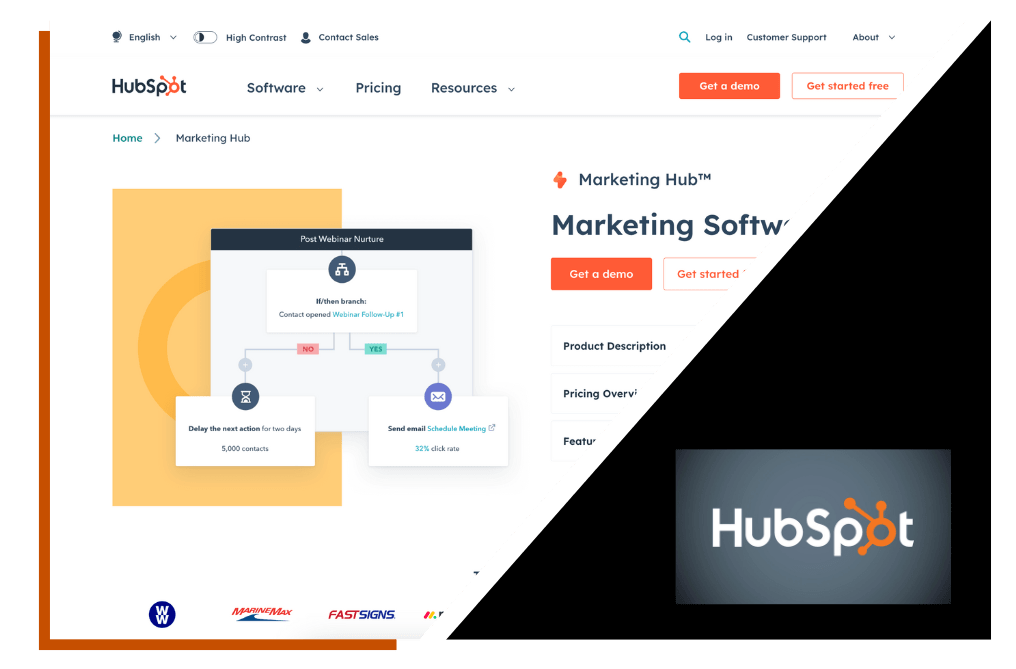
HubSpot is much more than an email Marketing tool. In fact, they have developed quite complex software for all things CRM. The email marketing features offered by HubSpot are similar to numbers 1 and 2 on this list; however, where HubSpot is unique is its all-in-one CRM solution approach. Essentially it's like buying into an ecosystem where each tool (email marketing, website, CRM, etc.) is all running on the same system.
Key Features
- Industry-best email marketing features and customizability.
- Great for growing companies needing an all-in-one solution.
- Wide variety of features for small businesses.
4. MailerLite
MailerLite is an easy-to-use email marketing tool – especially for beginners – but where it really excels is at selling subscriptions. Users can choose from three campaign styles, then personalize the messaging for different target customers to get the most out of your email effort. Much of the workflow is automated, and one of the best features is its free version.
If your email list is 1,000 subscribers or less, you can design your own custom email campaign and send as many emails as you want, making it great for smaller businesses or digital creators with a subscription model. Many in the growing digital economy are focused on e-learning and online classes – it's an industry projected to be worth about 645 billion by 2030 – and if that’s you, this might be a winner.
Key Features
- Targeted customization for different customer segments
- Automated workflow templates
- Free version for 1,000 subscribers or less
Email Marketing Serves One Purpose.
Email marketing is still an important part of today’s digital landscape, even if you’re not running a massive company. And it doesn’t have to be overwhelming. With a sound email marketing strategy/platform in place, your business can realize more revenue, greater customer loyalty, and growth.
Get Started With Cause Machine
Starting with a community engagement strategy is the secret to building a successful platform in the long term. Cause Machine helps customers build the plan of engaging a community well and then begin mapping out the technology to help support that strategy. We’re certain that you’ll find some great resources and powerful tools in Cause Machine to better engage your community. Learn how it can work for you here.
Grow a Digital Community, Build Revenue
- Community
- Guiding People
- Technology
- and 1 more...

A successful community looks very different than it did years ago. Whether you’re an aspiring influencer, an artist, an entrepreneur or you run a non-profit, today’s success is often made online – and almost always goes hand in hand with a thriving digital community.
Why Start a Digital Community?
Just like building a community in the real world, a digital community is just a group of people with a shared identity. But this group is different. In a digital community, members can easily join or leave the group, meaning they only stay with the ones they like. It’s not as simple as being born into a neighborhood, and forever being part of that group.
Digital communities are created by people with a shared goal or interest, who take that commonality and make it the center of a whole online ecosystem. They interact, build friendships, debate, celebrate, support and even shop, all while keeping the common core in mind. These digital communities are vital to modern businesses and organizations and should be skillfully cultivated.
A Digital Community Can Mean More Revenue
A thriving digital community can drive sales, strengthen name recognition and get people involved with a cause – but those people are more than just customers or fans. When healthy, members act almost like ambassadors, carrying a message out into the world, and helping brands achieve goals and grow bigger.
It involves capturing attention and earning respect and trust. Communities can do this by making self-expression feel safe and making it worth while for community members to get involved. That involvement should be something that signals passion – making a purchase, signing up for a volunteer opportunity, or even just sharing a post with the group. Hopefully, it will create enough goodwill and loyalty to keep the community members engaged over and over.
Ultimately, all modern brands and missions need a digital community, but if creating one sounds scary, don’t worry. It’s not nearly as daunting as it seems. It should be noted that the most effective examples are not always the ones with the most followers – they’re the ones whose members feel most comfortable engaging.
3 Steps to Building a Successful Digital Community
1. Know Your Role
First things first, and you need to get real about what you want from this digital community. Consider why you are starting it, the needs of the brand, and who you are serving. That last one is a biggie – you have to have an ideal member in mind and prepare your messaging for them. What do they like? What are they against? Only by knowing your users can you find something in common with them, which is your core community bond.
- Imagine your ideal member, and try to be as realistic as possible.
- Find something in common, and be prepared to highlight that.
- This will begin to generate a shared identity.
2. Give Ownership to Members
Here’s a secret: Just because you built the community, that doesn’t mean it’s yours. A true digital community belongs to the people, and people value a community most when they connect, engage, and feel encouraged to share. Whether in an open forum, live event, or even a digital community around learning through online courses. Always listen to the community members and consider their suggestions; this will give them a sense of ownership. And when you do start sharing content, be human, and be vulnerable in what you express (this isn’t the place for corporate business-speak).
- Listen to your community and give members a sense of ownership.
- Focus on solutions (not problems), and be human (not HR).
- Offer something of value.
3. Share the Wins
This may come as a surprise, but there is evidence that a digital community is at its most active when celebrating success, even if it’s a small win. According to a study by The Visual Capitalist shared by Rolling Stone’s Culture Council, even the world’s biggest influencers see peaks in interaction when they announce milestones like new albums, endorsements, or personal achievements – you can do this, too. Is a longtime team member getting married? Have you reached a sales goal or some other marker of progress? Share it with your community, because they just won, too. That’s the point of community to begin with. In the immortal words of Billy Dee Williams, “Success is nothing without someone you love to share it with.”
- Share your goals and achievements.
- Celebrate them like family.
- Ride the wave with follow-up posts.
Get Started With Cause Machine
Starting with a community engagement strategy is the secret to building a successful platform in the long term. Cause Machine helps customers build the plan of engaging a community well and then begin mapping out the technology to help support that strategy. We’re certain that you’ll find some great resources and powerful tools in Cause Machine to better engage your community. Learn how it can work for you here.


